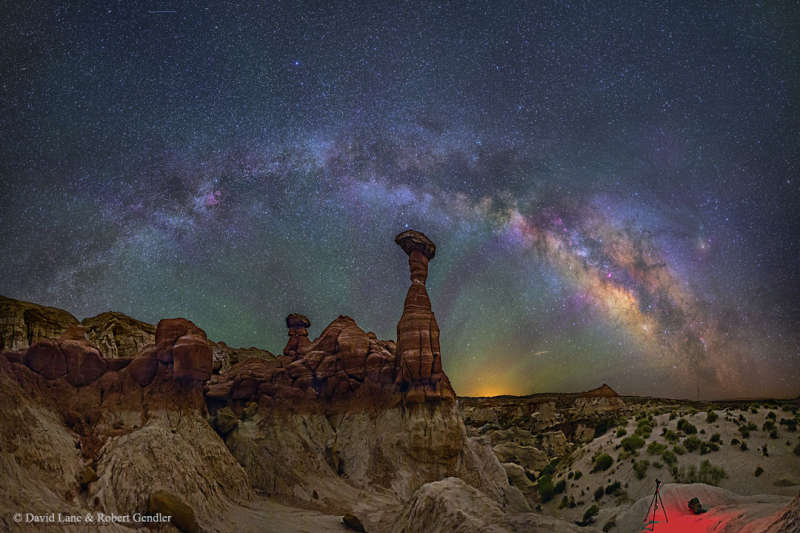
|
Credit & Copyright: David Lane &
R. Gendler (3 insets)
Explanation:
Which is older -- the rocks you see on the ground or the light you see from the sky?
Usually its the rocks that are older, with their origin sentiments deposited well
before light left any of the stars or nebulas you see in the sky.
However, if you can see, through a telescope, a distant galaxy far across the universe
-- further than
Andromeda or spiral galaxy
NGC 7331 (inset) -- then you are seeing light even more
ancient.
Featured here, the central disk of our
Milky Way Galaxy arches over Toadstool
hoodoos rock formations
in northern
Arizona,
USA.
The unusual
Toadstool rock caps
are relatively hard
sandstone
that wind has eroded more slowly than the softer sandstone underneath.
The green bands are
airglow, light emitted by the
stimulated air in
Earth's atmosphere.
On the lower right is a time-lapse camera set up to capture the
sky rotating behind the picturesque foreground scene.
|
January February March April May June July August September October November December |
| ||||||||||||||||||||||||||||||||||||||||||||||||
NASA Web Site Statements, Warnings, and Disclaimers
NASA Official: Jay Norris. Specific rights apply.
A service of: LHEA at NASA / GSFC
& Michigan Tech. U.
Based on Astronomy Picture
Of the Day
Publications with keywords: Milky Way
Publications with words: Milky Way
See also:
- APOD: 2025 July 2 Á Milky Way Through Otago Spires
- APOD: 2025 May 20 Á Milky Way over Maunakea
- APOD: 2025 May 13 Á Gaia Reconstructs a Top View of our Galaxy
- APOD: 2025 May 12 Á Gaia Reconstructs a Side View of our Galaxy
- Galaxies in Space
- APOD: 2025 February 9 Á Milky Way over the Australian Pinnacles
- APOD: 2024 November 24 Á Journey to the Center of the Galaxy
